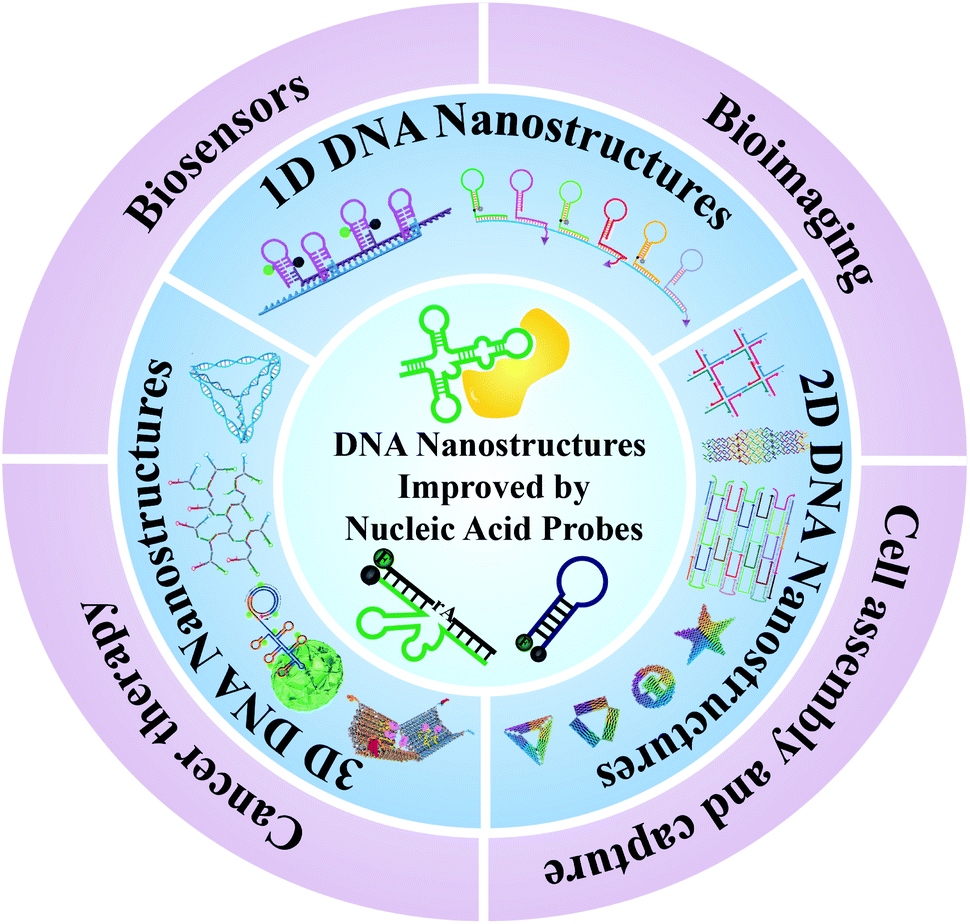Peptides offer a unique platform for nanoscale control within molecular systems, thanks to their programmable sequence and ability to self-assemble into defined structures. This capability has opened pathways for constructing nanofibers, hydrogels, and functional biomaterials with high spatial accuracy. Their modular design enables the incorporation of chemical groups or functional motifs, allowing researchers to build responsive materials that interact with light, pH, or other molecular stimuli. Additionally, peptides are being explored as scaffolds for catalysis, bioelectronics, and surface functionalization, where their conformational flexibility and binding specificity are advantageous. By leveraging their physicochemical properties beyond biological signaling, peptides are increasingly becoming the building blocks of smart, adaptable molecular systems.
PNAs: Synthetic Scaffolds for Molecular Recognition
Peptide Nucleic Acids (PNAs) stand out not only for their genetic mimicry but also for their role as precision scaffolds in molecular recognition. Their uncharged backbone reduces electrostatic repulsion, allowing PNAs to hybridize efficiently with complementary DNA or RNA even under low ionic strength or complex sample conditions. This makes them ideal for integration into high-fidelity molecular probes and sequence-specific capture systems. Beyond hybridization, PNAs are increasingly employed in nanostructure design and surface-anchored arrays, where their structural rigidity and binding predictability enhance spatial resolution and pattern control. Their compatibility with chemical modifications also enables the development of bifunctional molecules that bridge nucleic acid targets with reporters, tags, or nanomaterials. In this way, PNAs are evolving as dynamic components in the design of highly selective, programmable molecular systems.
Schematic of DNA nanostructure-based nucleic acid probes: construction and biological applications
Comparing Peptides and PNAs in Nanotechnology
Peptides and Peptide Nucleic Acids (PNAs) both serve as versatile components in nanotechnology, yet they operate through fundamentally different mechanisms and structural frameworks. Peptides, owing to their natural ability to self-assemble and form secondary structures such as α-helices and β-sheets, are widely utilized in designing nanofibers, hydrogels, and biomimetic surfaces. Their sequence-driven conformational diversity enables the creation of responsive, biocompatible materials that can adapt to environmental changes. In contrast, PNAs function primarily as synthetic recognition elements, offering exceptional stability and sequence specificity when hybridized with nucleic acid targets. Their rigid, uncharged backbone minimizes electrostatic interference, making them ideal for constructing DNA-directed nanostructures, nanosensors, or hybrid biomaterials requiring precise sequence control. While peptides excel in structural flexibility and dynamic assembly, PNAs provide unmatched fidelity in nucleic acid interaction, allowing both molecules to complement each other in the development of smart nanodevices and programmable molecular systems.
Peptide–PNA Hybrid Systems: Bridging Structure and Specificity
Peptide–PNA hybrid systems combine the structural versatility of peptides with the molecular recognition precision of PNAs, enabling the development of multifunctional nanoplatforms. One notable application involves conjugating PNAs to cell-penetrating peptides (CPPs) to enhance intracellular delivery. These hybrids allow PNAs to cross biological membranes efficiently while maintaining their ability to bind nucleic acid targets with high affinity. In biosensing, peptide–PNA conjugates have been immobilized on solid surfaces to create sequence-specific capture probes with improved orientation and surface accessibility, increasing the sensitivity and selectivity of nucleic acid detection. Additionally, PNA-peptide hybrids have been integrated into nanocarriers and self-assembled scaffolds, where the peptide domain contributes to structural organization or targeting, and the PNA provides programmable hybridization capability. This synergy opens avenues in constructing responsive molecular systems, nanoswitches, and patterned nanomaterials for applications in molecular diagnostics, synthetic biology, and materials engineering.
AI-Powered Design of Peptide–PNA Complexes

